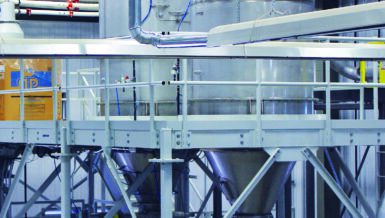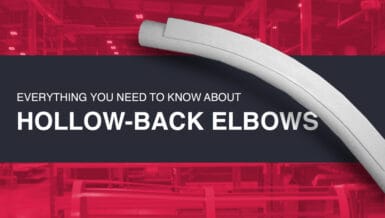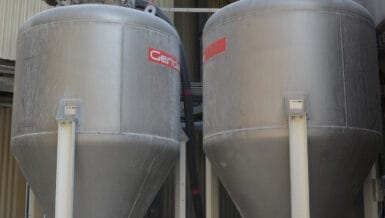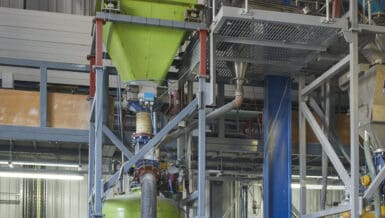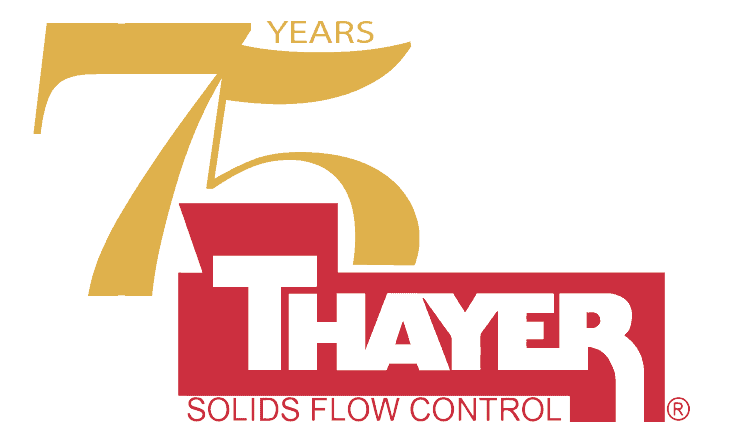Wear creates issues like shredding, streamers, blocking and dusting, pile and bulking, contamination, downtime, friability, corrosion, and erosion, not to mention the associated costs. That’s why you should be using durable, cost-effective, wear-resistant elbows and other components that are right for the job.
There are a couple of different types of wear that are the most common. It is important to recognize these so you can take steps to reduce the amount of wear you’re experiencing in your system.
The Different Types of Wear
- Impact wear: During impact wear, bends in your system will see the brunt of the impact. With impact wear you typically see a hole Impact wear usually appears as a hole which is right at or just off of the tangential line where the material hits the back of the elbow right where it’s straight. It’s especially visible on short radius elbows.
- Sliding abrasion: Sliding abrasion will wear down the line components over a longer period of time. It appears as a line of abrasion that looks like a long, even pattern. An item to note is, at times, sliding abrasion will require longer tangents or flanges if the abrasion is occurring under the couplings.
Think of a playground slide. Rolling rubber balls from the top of the slide to the bottom will have an impact on the slide over time, whereas if you throw the balls hard at the bottom of the slide, the impact on the slide will be more severe more quickly.
How to Manage Elbow Wear
Ceramic coated or ceramic lined elbows are very effective at managing wear and can take an incredible amount of impact from larger particles of the conveyed material traveling at high velocity.
There might be other types of elbow that work better in your system or for the material you’re conveying, and you may need a specialty solution that’s geared toward solving your particular problem. It’s important to maximize abrasion resistance as much as you can in order to reduce wear and save the time, effort, and expense it takes to replace elbows and other components in your system.
The Third Type of Wear
A less common type of wear is corrosion. We don’t come across it a lot at Progressive Products, but when we do it’s usually in conveying chemicals. This means that rather than using a ceramic coated or ceramic lined elbow, your solution is probably more to do with the alloy you’re using in your elbow – you may just need a stainless steel elbow to help prevent corrosion. The most unusual example we’ve seen of corrosion is a company conveying oak chips. The sap produced by the wood was corrosive and had weakened their regular steel elbows over time.
At Progressive Products, we won’t sell you anything you don’t need – we’ll get you the best elbow that’s right for your individual system. Contact us today to find the right solution for you.






